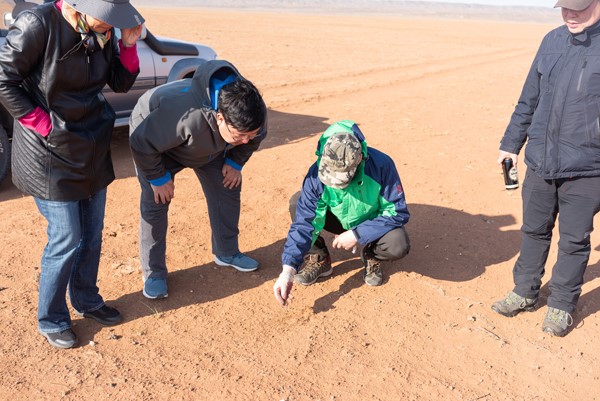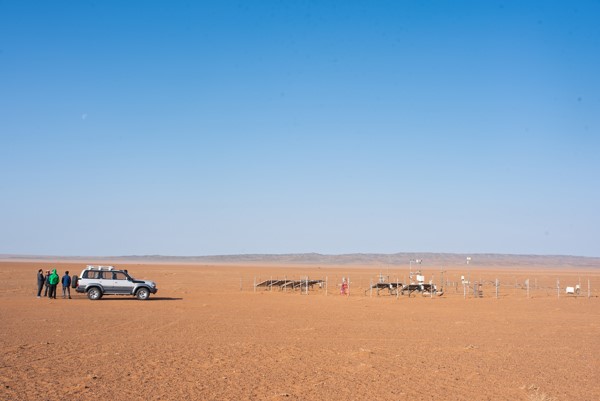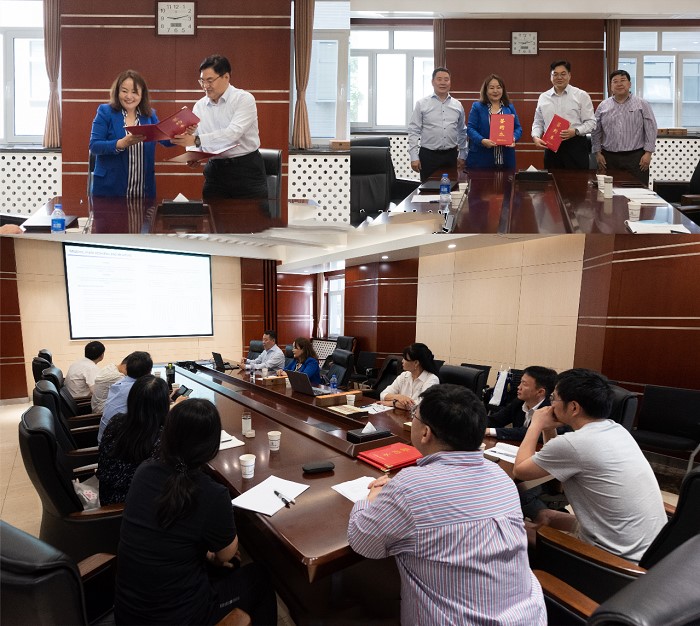

China and Mongolia Collaborate to Combat Sand and Dust Storm
A joint research on sand and dust storms between China and Mongolia was launched in June 2023. As part of the strategic partnership, researchers from the Institute of Atmospheric Physics (IAP) of the Chinese Academy of Sciences and the Information and Research Institute of Meteorology, Hydrology and Environment (IRIMHE) of Mongolia visited each other.
The main objective of the partnership was to formalize a "Framework Cooperation Agreement" between the two institutes. Supported by the CAS-TWAS Excellence Center for Climate and Environment Sciences and the National Natural Science Foundation of China, the agreement aims to strengthen scientific and technological cooperation in critical areas such as East Asian sand and dust storms, climate change and cold waves.
As a start, a delegation of Chinese researchers led by Dr. BUEH Cholaw visited Mongolia in early May. They exchanged scientific understanding on cross-border dust storm research with scientists from IRIMHE and traveled to the Gobi Desert to learn the local information of meteorological and land surface conditions of the sand and dust storm. Both parties agreed that understanding factors such as wind speed, precipitation, and land surface conditions that affect sand and dust storms is important for developing dust models and mitigation strategies.
Mongolia's challenging climate and fragile ecology have made it a breeding ground for immense dust storms, as evidenced by catastrophic dust storms in recent years. Dr. Gomboluudev Purevjav, Scientific Secretary of IRIMHE and Project Leader on the Mongolian side, emphasized, "Dust storms transcend borders and require joint determination and action.

Field trip to Gobi Desert in Mongolia

One of three monitoring stations in Tsogt-Ovoo soum of Umnugobi province.
Dr. Sarantuya, Director of IRIMHE of Mongolia, then visited IAP with a delegation of four on June 8, 2023. IAP Deputy Director ZHOU Tianjun warmly welcomed the Mongolian delegation, setting the stage for a trip full of commitments. The directors then signed the "Framework Cooperation Agreement" between the IAP and IRIMHE. This agreement aims to implement the important consensus between the leaders of the two countries and further strengthen scientific and technological cooperation between the two institutes in various fields, such as East Asian dust storms, climate change, and cold waves. The signing of the agreement marks a significant milestone and embodies a shared commitment to pooling expertise and resources to address common environmental challenges.

Signing of the Agreement.
Mongolia is a neighboring country included in China's Belt and Road Initiative. Improving cross-border dust storm monitoring, forecasting and prevention capabilities between China and Mongolia will strongly support the sustainable development of the economies and societies of both countries. Therefore, the initiative emphasizes scientific research and cooperation, focusing on data sharing, expertise exchange, and support for young scientists.